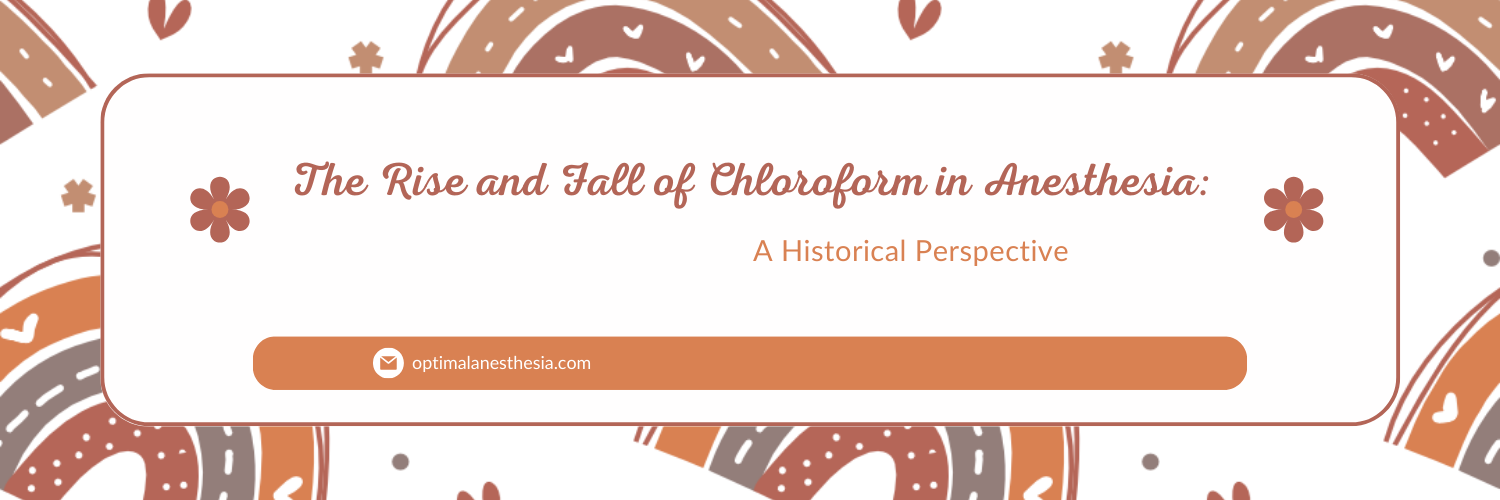Introduction
The history of anesthesia is a captivating journey marked by discoveries, controversies, and paradigm shifts. Among the significant agents used for rendering patients unconscious during surgery, chloroform occupies a unique place. This article delves into the remarkable rise and eventual fall of chloroform in anesthesia, shedding light on its initial promise, the controversies it stirred, and the enduring lessons it offers to modern anesthesia practice.
Chloroform’s Emergence: A Game-Changer in Surgery
In the mid-19th century, chloroform emerged as a revolutionary alternative to ether for inducing anesthesia. James Simpson, a Scottish obstetrician, is credited with introducing chloroform to the medical world in 1847. Its rapid acceptance was due to its effectiveness in rendering patients unconscious and alleviating pain during surgical procedures. This marked a turning point in the practice of surgery, making complex and less painful operations possible.
The Shadows of Controversy: Deaths and Debates
While chloroform promised enhanced patient comfort and greater surgical possibilities, it was soon overshadowed by reports of fatalities associated with its use. These deaths cast a dark cloud over chloroform’s reputation and prompted critical questions about its safety. The medical community became deeply divided over the cause of these fatalities.
The Edinburgh School vs. the English School: Dueling Hypotheses
Two prominent schools of thought emerged to explain the cause of death during chloroform anesthesia. The Edinburgh School, led by Professor James Syme, argued that death was primarily due to paralysis of respiration. In stark contrast, the English School contended that the heart stopped first. This fundamental disagreement led to intense debates and left the medical world grappling for answers.
Scientific Investigations: The Quest for Clarity
To resolve the chloroform controversy, scientific investigations were launched. Researchers like Flourens in France and John Snow in England conducted experiments on animals to unravel the enigma of chloroform-induced deaths. These experiments sought to provide empirical evidence regarding the safety and risks associated with chloroform anesthesia.
The Chloroform Commission and Snow’s Contributions
In 1855, the Chloroform Commission convened in Paris and reached the conclusion that, in animals, respiration ceased before the heart. John Snow’s pioneering work further advanced our understanding. He found that excessive percentages of chloroform could lead to death and that the sequence of events could vary. Snow’s insights were pivotal in shaping the discourse around chloroform.
Royal Medical and Chirurgical Society: Confirming Findings
In 1864, the Royal Medical and Chirurgical Society formed a committee to investigate chloroform’s safety. Their findings validated Snow’s observations, emphasizing that blood pressure consistently decreased before respiratory arrest. This led to the recommendation of safer alternatives, such as the alcohol-chloroform-ether (A.C.E.) mixture.
Continued Controversies and Lasting Legacy
Despite the progress made in understanding chloroform’s mechanisms and risks, controversies persisted. Researchers like Leonard Hill in London challenged the conclusions of previous studies, adding to the complexity of the debate. This enduring controversy left an indelible mark on the field of anesthesia.
Conclusion: Lessons from Chloroform’s Journey
The rise and fall of chloroform in anesthesia serve as a poignant reminder of the intricate and evolving nature of medical science. While chloroform’s prominence waned with the advent of safer alternatives, the controversies it stirred underscore the importance of evidence-based practices in anesthesia. This historical narrative offers valuable lessons in patient safety and the ever-evolving quest to provide safe and effective anesthesia care in the modern era.


